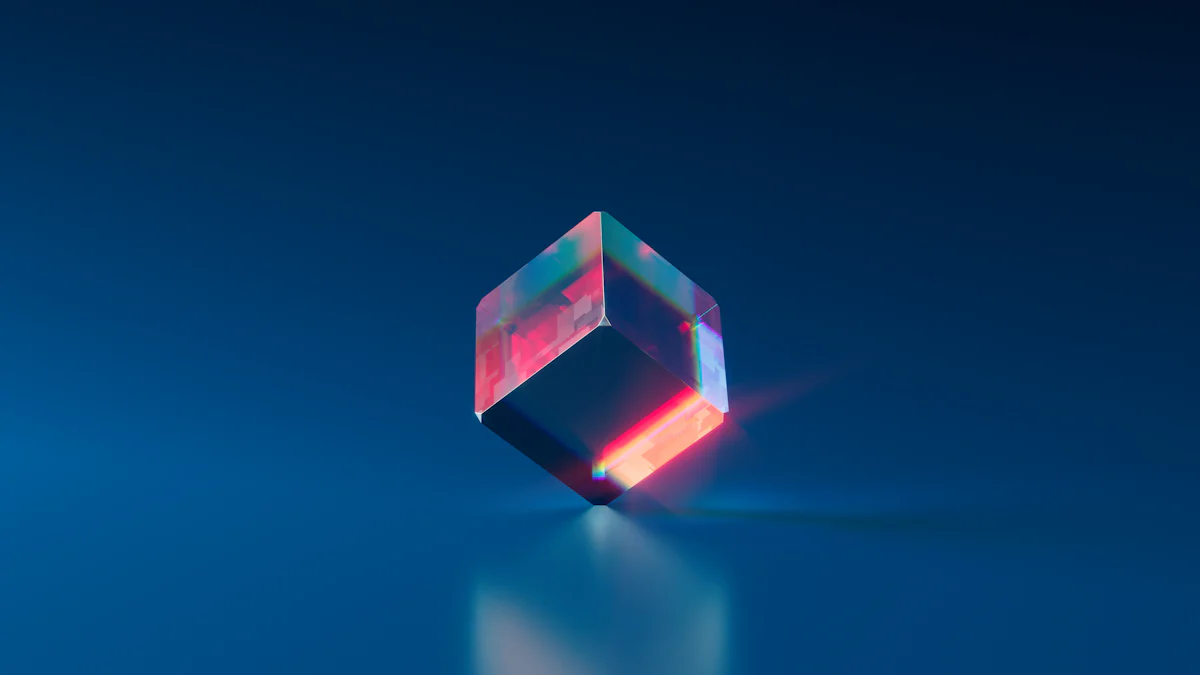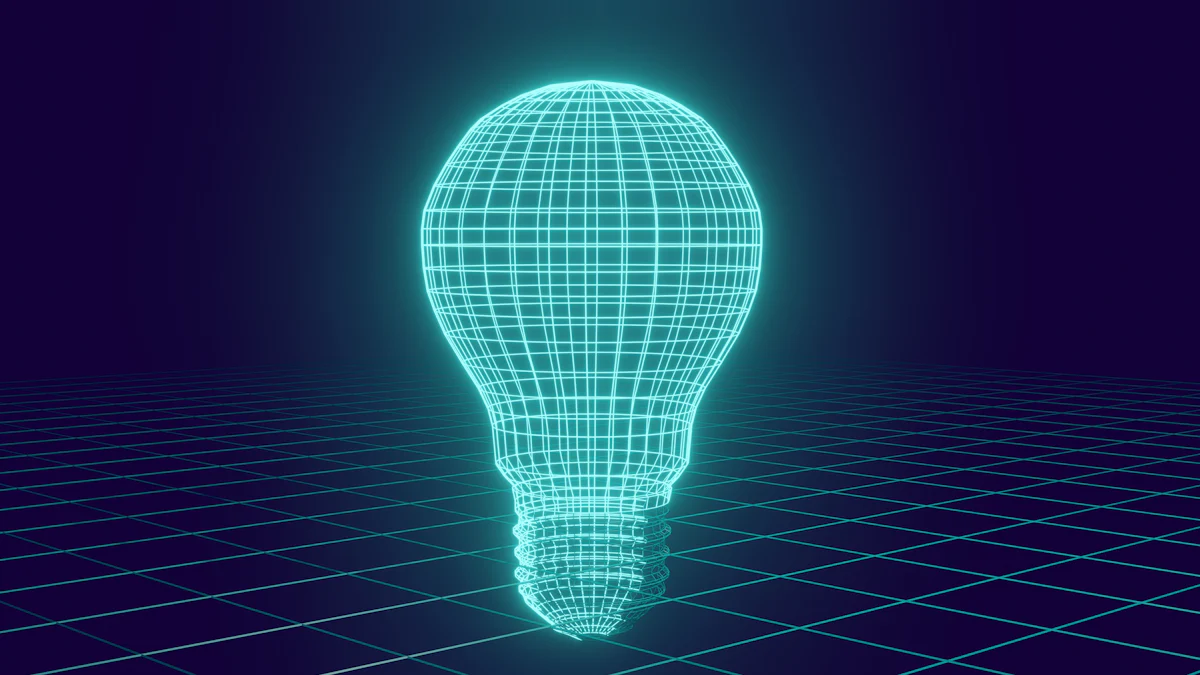From Image to 3D Model: AI Techniques Explained

Have you ever wondered how a simple image can be transformed into a detailed 3D model? The secret lies in AI technology. By utilizing an image to 3D model AI 3D model generator, you can convert a flat image into a dynamic 3D structure. This process is not only fascinating but also incredibly useful. Industries such as architecture, engineering, and manufacturing heavily depend on 3D modeling. The architecture, engineering, and construction (AEC) industry alone is projected to reach a value of $12.13 billion by 2028. The demand for 3D content continues to grow across various sectors. AI tools make this transformation accessible and efficient, and with options like image to 3D model free image generators, even more people can take advantage of this technology.
Understanding the Basics of Image to 3D Model
What is 3D Modeling?
3D modeling creates a three-dimensional representation of an object or surface. This process involves using specialized software to craft a digital model that can be viewed from any angle. The significance of 3D modeling lies in its ability to transform ideas into visual forms. Designers, architects, and engineers use 3D models to visualize concepts before production.
Historical Examples:
- Early 1990s: Mature 3D applications like AutoCAD, CATIA, and Cinema 4D emerged. These tools assisted with 3D modeling in architecture, product design, simulation, and video games.
- Late 20th century: Machine learning techniques integrated into AI 3D modeling. This marked a significant shift, laying the groundwork for more intelligent and adaptive methods.
The evolution of 3D modeling has bridged the gap between virtual imagination and tangible reality. This transformation shapes modern life in various fields, making it a cornerstone of technological advancement.
Role of AI in 3D Modeling
AI plays a crucial role in enhancing the 3D modeling process. AI-driven tools streamline workflows by automating complex tasks. This automation allows designers to focus on creativity rather than technical details. AI 3D generators democratize access to 3D designs, enabling anyone to create stunning models with ease.
Key AI Technologies Involved:
- Generative Adversarial Networks (GANs): These networks generate realistic images and models by learning from large datasets.
- Neural Networks: These systems mimic human brain functions to recognize patterns and improve model accuracy.
- Machine Learning Algorithms: These algorithms adapt and improve over time, enhancing the quality of 3D models.
AI-driven tools represent an exciting opportunity for designers to innovate and collaborate in new ways. Platforms like Tripo allow users to transform 2D images into high-quality 3D models quickly. The image to 3D model AI 3D model generator image to 3D 3D model generator image to 3D model free image technology continues to revolutionize the industry.
Step-by-Step Process of Converting Images to 3D Models

Creating a 3D model from an image is like magic. You start with a flat picture and end up with a dynamic 3D structure. Let's dive into how you can do this using AI tools.
Preparing the Image
Image quality plays a crucial role in the conversion process. High-resolution images provide more detail, which helps in creating accurate 3D models. Blurry or low-quality images might result in less precise models. So, always aim for the best quality you can get.
For formats, JPEG and PNG are commonly recommended. These formats maintain good quality without taking up too much space. Ensure your image is clear and well-lit. This makes it easier for the AI to understand and process the details.
Using AI Tools for Conversion: Tripo3D
Several AI tools can help you transform images into 3D models. Tripo3D is a popular choice. This platform offers intuitive interfaces and powerful AI capabilities. It make the conversion process smooth and efficient.
Here's a simple guide to using an AI tool like Tripo:
- Upload Your Image: Start by uploading your high-quality image to the platform.
- Select Conversion Options: Choose the settings that suit your needs. Some tools allow you to adjust the level of detail or texture.
- Initiate the Conversion: Click the convert button and let the AI work its magic. The process usually takes a few minutes.
- Review the Model: Once the conversion is complete, review the 3D model. Check for any inaccuracies or areas that need refinement.
These tools often come with libraries of customizable assets. This feature is great for animators and designers who want to add unique touches to their models.
Refining the 3D Model
After generating a 3D model, refining it ensures accuracy and quality. Techniques like smoothing and adjusting textures can enhance the model's appearance. Many AI tools provide options to tweak these settings.
Watch out for common pitfalls. Over-reliance on default settings might lead to generic models. Always review and adjust the model to fit your specific requirements. Avoid using low-quality images as they can lead to inaccurate models.
By following these steps, you can effectively use an image to 3D model AI 3D model generator image to 3D 3D model generator image to 3D model free image technology. This approach opens up endless possibilities for creativity and innovation.
Recommendations and Warnings

Creating a 3D model from an image can be exciting, but you need to keep some key points in mind. Let's dive into some recommendations and warnings that will help you get the best results.
Ensuring Input Quality
The quality of your images plays a huge role in the success of your 3D model conversion. High-resolution images with good lighting will give you the best results. Low-quality images can lead to inaccurate models. You want to avoid that, right? So, always aim for top-notch image quality.
Tips for Selecting the Right Images
- Resolution Matters: Use images with high resolution. This ensures more detail in your 3D model.
- Lighting is Key: Make sure your images have good lighting. Shadows or poor lighting can confuse the AI.
- Focus on Clarity: Blurry images won't work well. Keep your images sharp and clear.
Common Mistakes to Avoid
- Avoid Low-Resolution Images: These can result in poor-quality models.
- Don't Ignore Lighting: Bad lighting can mess up the details.
- Watch for Blurriness: Blurry images lead to inaccurate models.
Understanding Limitations
Even with the best images, you need to understand the limitations of current AI tools. AI technology has come a long way, but it's not perfect yet. Knowing what to expect can save you from disappointment.
Technical Constraints of Current AI Tools
- Texture Inconsistencies: AI might not always get the colors right. You may need to tweak the textures manually.
- Detail Limitations: Some intricate details might not translate well.
- Processing Time: Complex images might take longer to process.
Managing Expectations
- Expect Some Manual Work: You might need to refine the model after conversion.
- Understand the Tool's Limits: Know what your chosen tool can and can't do.
- Be Ready for Surprises: Sometimes, the model might not look exactly like the image.
By keeping these recommendations and warnings in mind, you'll be better prepared to use an image to 3D model AI 3D model generator image to 3D 3D model generator image to 3D model free image technology effectively. This knowledge will help you create more accurate and impressive 3D models.
Pricing and Accessibility
Exploring the world of 3D modeling can be thrilling, but understanding the costs and accessibility of AI tools is crucial. Let's break down what you need to know.
Cost of AI Tools
When diving into the realm of AI 3D modeling, you'll find a mix of free and paid options. Free tools offer a great starting point for beginners. These tools often provide basic features that allow you to get a feel for the process. However, paid tools usually come with advanced functionalities. These features can significantly enhance your modeling experience.
Free vs. Paid Options
- Free Tools: Ideal for those just starting out. These tools let you experiment without financial commitment.
- Paid Tools: Offer more robust features. These tools cater to professionals who need advanced capabilities.
The choice between free and paid depends on your needs. If you're just exploring, free tools might suffice. For more complex projects, investing in a paid tool could be worthwhile.
Value for Money Considerations
Consider what you get for your money. Paid tools often include customer support, regular updates, and advanced features. These benefits can save time and improve the quality of your models. Evaluate the cost against the value provided. This helps ensure you're making a sound investment.
Accessibility of Technology
AI technology has become more accessible over the years. Different tools cater to various user levels, making it easier for everyone to join the 3D modeling community.
Availability of Tools for Different User Levels
- Beginner-Friendly Tools: These tools have simple interfaces. They guide users through the process step-by-step.
- Advanced Tools: Designed for experienced users. These tools offer more customization and control.
Whether you're a novice or a seasoned professional, there's an AI tool for you. The wide range of options ensures everyone can find a suitable image to 3D model AI 3D model generator image to 3D 3D model generator image to 3D model free image tool.
Future Trends in Accessibility
The future looks promising for AI 3D modeling accessibility. Developers continue to innovate, creating tools that are easier to use. Expect more intuitive interfaces and enhanced features. These advancements will make 3D modeling even more accessible to a broader audience.
Explore More
- Step-by-Step Guide to Converting 2D Images to 3D Models with Tripo
- How to Create 3D Models with AI Technology
- Tripo Tutorial For Web App
Advancing 3D generation to new heights
moving at the speed of creativity, achieving the depths of imagination.

